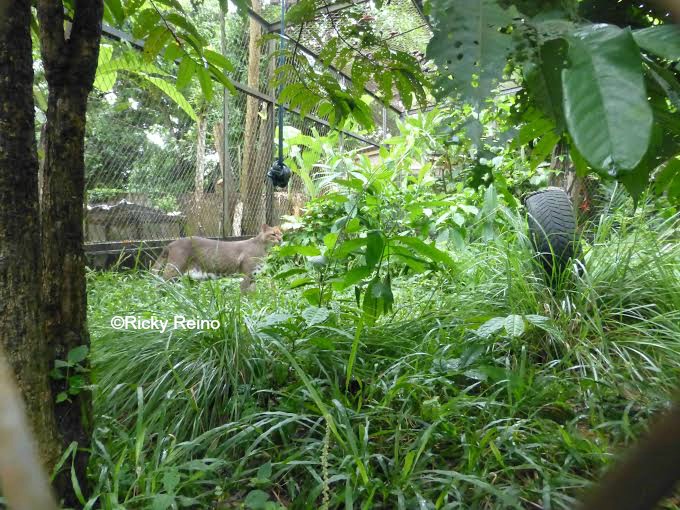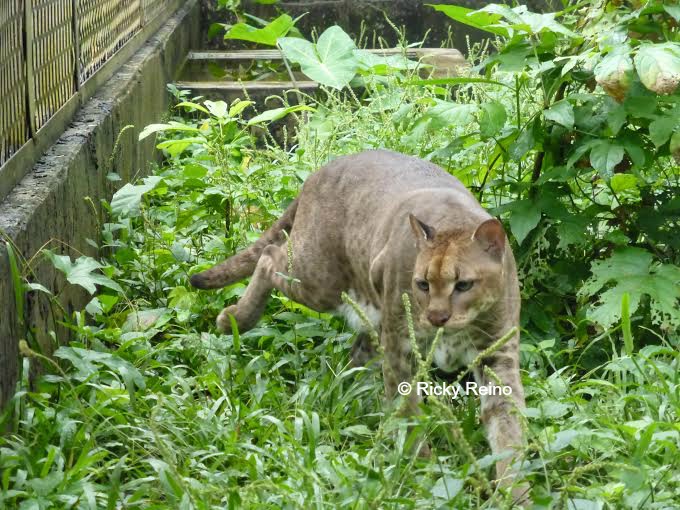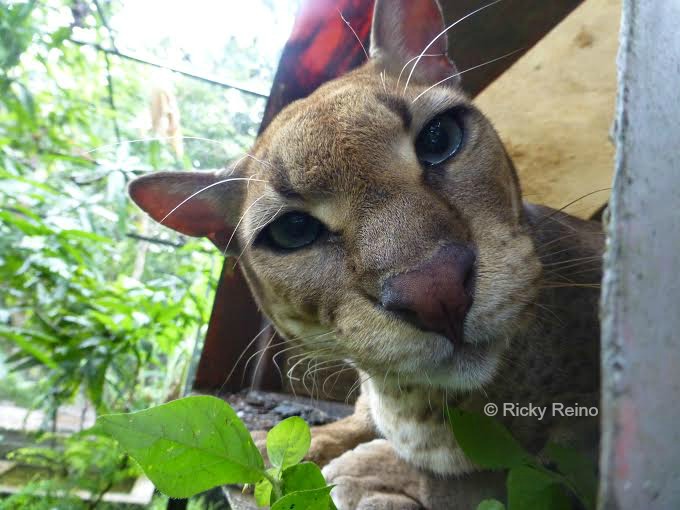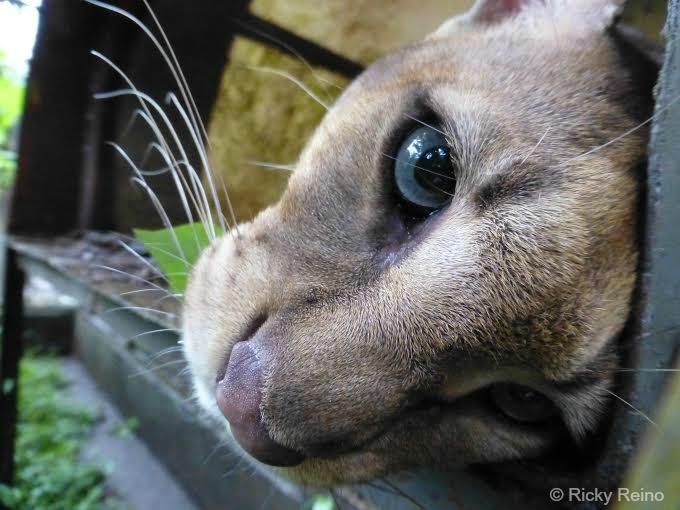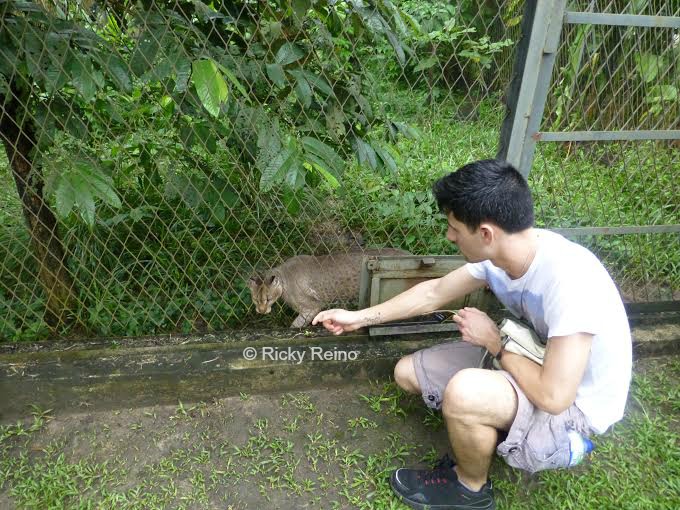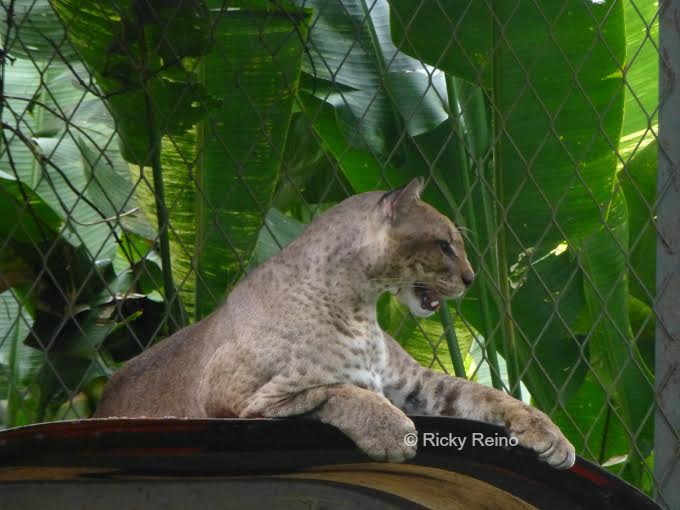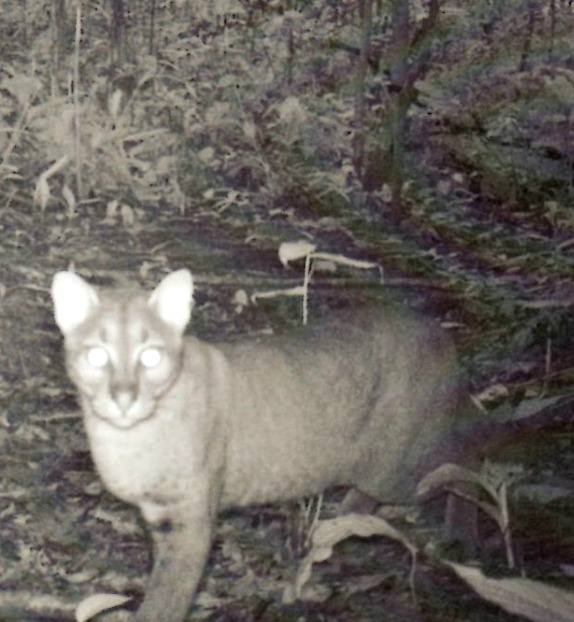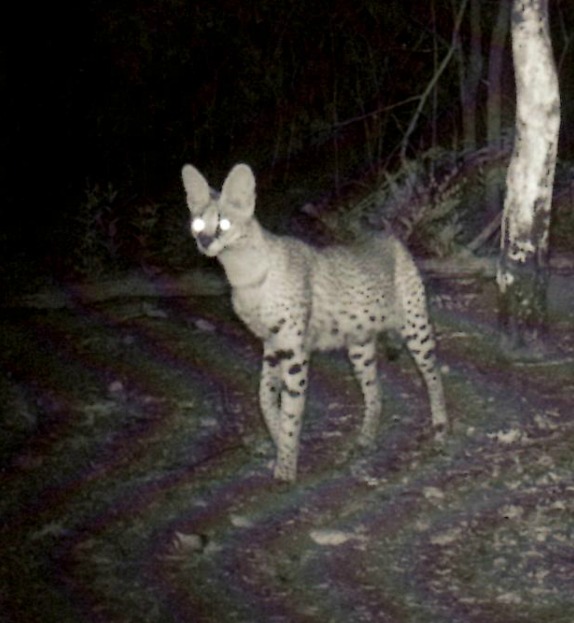By Ricky Reino
With this post I’m going to tell you about my ‘Weekend to Africa’ to spend time with an African golden cat!
African golden cats are most definitely the least known of all the African cat species, and there haven’t been many recorded in captivity, with the last known ones passing away many years ago.
In 2014 after some months of communication (having had to majorly brush up on my French), I was invited to a private sanctuary in Central Africa by a lady who happened to keep what I think may be the only captive African golden cat. I booked my flights for March, and asked my dad to come along too as Central Africa wasn’t a place that I wanted to go to alone.
One long and bumpy plane journey later we arrived safely and were taken to the sanctuary, which was through the local village, down a dirt track and behind a big set of metal gates. Despite being extremely tired from the journey and the shock to the system of being in such a high humidity area (after coming from a very rainy London) I was itching to see the cat, but it was 2am so everything was in darkness.
Once we had had the chance to catch up on sleep the owner showed us around the grounds and explained why she had the various animals there. Animals such as the golden cat, some mangabey monkeys, mongoose, civets, various small hoofed animals and a 4 year old gorilla were all victims of wildlife crime and as the owner worked for the government, she took them in to her sanctuary.
Having grown up with western zoos, enclosures here weren’t to the standards that I was used to, but the owner and her staff showed as much passion and enthusiasm for the animals as any keeper that I have worked with. I was shown plans for a brand new ‘semi-wild’ site that was being created deep in the forest that the animals would move to so they weren’t near to people, and was asked to design a better enclosure for the African golden cat, with the ability to hold more than one in case others were to be rescued. I felt privileged to be asked this and got on with designs straight away.
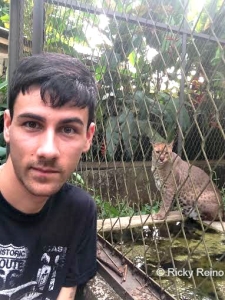 My weekend at the sanctuary was mostly spent sat by the side of the African golden cat enclosure, completely mesmerised by how stunning it was.
My weekend at the sanctuary was mostly spent sat by the side of the African golden cat enclosure, completely mesmerised by how stunning it was.
It was a 4 year old male that the owner took in at a young age, due to villagers finding him on his own at the edge of a forest who then handed him over to police.
He was a solidly built cat, a little bigger than a caracal (which it is closely related to genetically) with a reddish/grey coat, a white underside and faint markings along his sides & belly. He had huge feet, long back legs, a shorter tail and amazing crystal blue eyes.
Despite having been in a captive environment from a young age, he showed lots of interest and natural stalking behaviour in the various hoof stock species roaming freely in the area next to his enclosure. He would also readily leap up the branches in the enclosure to try and catch wild birds that landed on his roof.
He wasn’t as aggressive as I had expected him to be, although he would hiss if I shuffled position (mainly due to the ants that were climbing into my shorts!) He was actually quite interested in what I was doing, and I have a lot of great pictures of his big pink nose, where he would put his face up to the camera just as the photo was taken!
With the keeper, I went in to the enclosure to clean up his mess and any food left overs, and although the cat was confident when there was a fence between us, he stayed out of our way when we were cleaning up, though we did have a broom at hand to keep him at distance if we needed to.
Whilst in the enclosure I took the opportunity to spray some of the owner’s perfume on a tree stump, as a bit of sensory enrichment, which is something that we do quite often in western zoos to keep our captive animals stimulated. As soon as we left the enclosure the golden cat investigated the new smell and displayed lots of similar behaviours to other cats that I have done this enrichment with – lots of head and body rubbing around the stump and then spraying over it and walking round his territory, spraying and calling.
Although it was a very quick trip, I absolutely loved having the opportunity to study and do a bit of enrichment with the African golden cat; and hope to go back once the new semi-wild site & enclosure complex is completed, to help with moving the animals.
I would love to create a bit more awareness for the existence of this beautiful but little known species, and help direct attention to the great studies being carried out by scientists and conservation organisations right now.
Thanks for reading
Ricky
See also African Golden Cat
